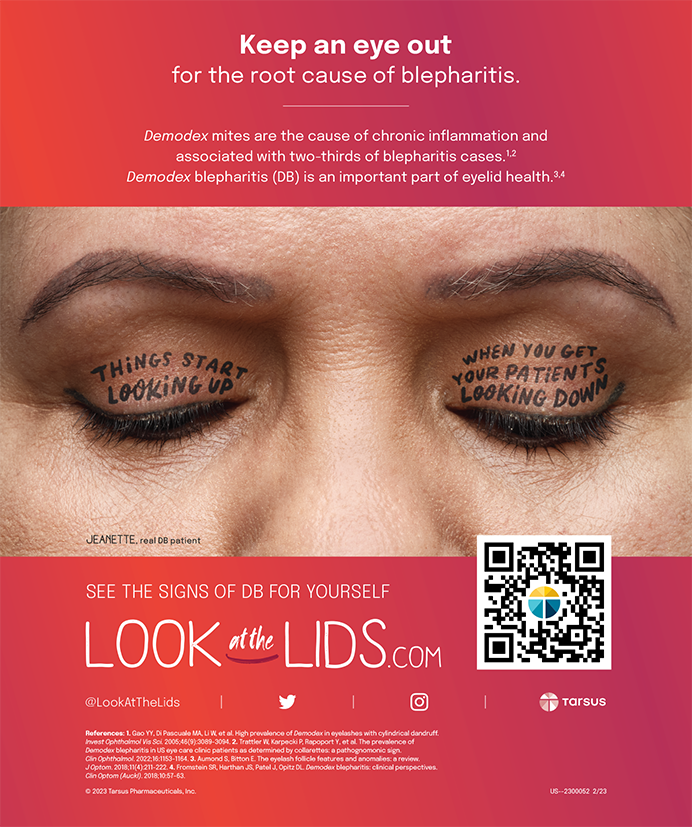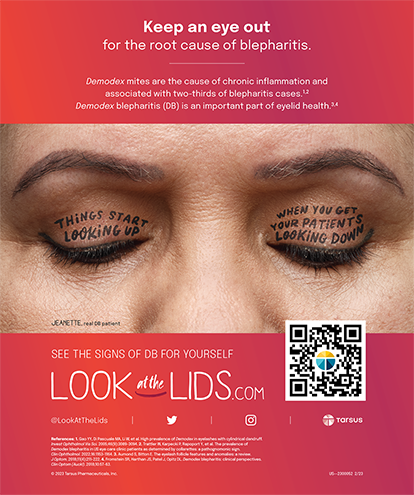Globally, a disproportionate percentage of corneal blindness exists in the developing world, yet there are few viable options to help local communities manage and treat these patients. As is the case in more industrialized nations, traumatic etiologies of corneal blindness are a significant contributor to disease's burden, but infectious causes that are uncommon to most Western practitioners are also a factor. Regardless of its cause, corneal blindness is difficult to treat in the developing world because of cost and infrastructure factors.
Introducing management techniques and technologies that are successful in more industrialized locales, even if they are extremely successful, may not be practical or sustainable in a developing nation with lesser financial means. There is an unspoken ethical responsibility in introducing new technologies to developing nations to ensure that they are not used indiscriminately. If the goal of humanitarian work abroad is to lower the burden of disease, then serious thought and effort should be given to making sure that, when new innovations are introduced, they have the best chance for long-term, sustained success.
ENSURING LOCAL SUSTAINABILITY
There is much interest on the part of the international community in using artificial corneas to help lower the disease burden of corneal blindness. The question is how to use artificial corneas, which typically are expensive to use and require lengthy and diligent follow-up, in a setting with minimal economic resources and limited access to care. I have been fortunate to be involved with an ongoing prospective, longitudinal study of the Boston Keratoprosthesis Type 1 (KPro; Boston Eye and Ear Infirmary) involving patients in Ethiopia and Sudan. This study was founded precisely to answer this difficult question.
When my colleagues and I launched the study, we had a very clear mission in mind: to see if a corneal transplant protocol that had successfully restored vision in studies conducted in more affluent countries could also be used in countries with limited health care resources. We did not want to introduce a surgery that would fail, either for cultural reasons or because of issues related to infection or compliance. We felt the most socially responsible approach was to study the Boston Type 1 KPro in a longitudinal, prospective manner to see if complication rates were similar to those in the developed world.
IMPROVING THE TECHNOLOGY
The challenge of ensuring that the KPro is sustainable in the face of fewer economic resources has helped with the overall development of the technology. The study sites, the Menelick II Hospital in Addis Ababa, Ethiopia, and the Makkah Eye Complex in Khartoum, Sudan, were natural partners for my institution because they are associated with eye banks or had access to donor cornea tissue. What to do about areas that do not have access to an eye bank that can furnish an allograft donor cornea to act as a carrier for the keratoprosthesis? That question led to the use of ipsilateral autologous corneas in four eyes of three patients, a method that was associated with significant improvement in uncorrected visual acuity in all of the eyes.1 If this protocol proves successful and repeatable, the advantages for accessibility and cost are obvious.
Part of the work we are doing with the Boston KPro abroad has resulted in the development of a new device that will incorporate many of the same optics and technological advances used in devices for the Western world but at a lower cost so that less industrialized nations can use them sustainably. Along with our international partners, we have already begun an evaluation of this new, low-cost Boston KPro, which we have named the Lucia. Although development of such a device may not have a direct impact on improving keratoprosthetics used in the United States and other more industrialized nations, the research and effort spent can only serve to help us better understand the technology and how it is used.
The Massachusetts Eye and Ear Infirmary has developed an international protocol for use of the KPro.2 The immediate benefit of this guidance is to help local communities use the device responsibly. Less obvious is that we are fulfilling an unspoken ethical mandate in ensuring that the product is used safely, effectively, and responsibly. The steering committee for the guidelines is currently working on a third revision.
KNOWLEDGE EXCHANGE
Implanting the KPro is a difficult operation, and it is only the first step in ensuring the treatment's success. The follow-up period is when most complications occur: patients fail to keep up with their medication protocols or stop attending their follow-up visits. Therefore, local surgeons must be diligent in observing patients postoperatively; selecting appropriate patients for the procedure is equally important.
Currently we limit the surgery to patients with bilateral blindness. To be considered, patients must have financial means to afford their postoperative medications. We also require them to have access to their local hospital and enough family support to ensure timely follow-up.
The outcomes have been positive in a clinical sense (Figures), and we are now preparing to publish our study's results. We have had great success training local corneal surgeons in Ethiopia and Sudan. The ophthalmologists are extremely motivated to learn, and they have done an excellent job of preselecting cases for the study and following up on cases postoperatively.
An extraordinary amount of work is required to keep this study going. This effort would simply not be possible without the work of my local collaborators, Yonas Tilahun, MD, of the Menelick II Hospital in Addis Ababa, Ethiopia, and Eiman Mudawi, MD, of the Makkah Eye Complex in Khartoum, Sudan. My own institution, Massachusetts Eye and Ear, and especially my mentor Claes H. Dohlman, MD, PhD, the inventor of the Boston Keratoprosthesis, have been very supportive. The success of this project is a tribute to the hard work and dedication of the various organizations and people that have contributed to the effort.
This article is reprinted with permission from Advanced Ocular Care's April 2012 edition.
Roberto Pineda, MD, is an assistant professor at Harvard Medical School in Boston. Dr. Pineda may be reached at (617) 523-7900; roberto_pineda@meei.harvard.edu.
- Ament JD, Tilahun Y, Mudawi E, Pineda R. Role for ipsilateral autologous corneas as a carrier for the Boston Keratoprosthesis: the Africa Experience. Arch Ophthalmol. 2010; 128(6):795-797.
- Ament JD, Pineda R, Lawson B, et al. The Boston Keratoprosthesis: international protocol, version 2. Published June 15, 2009. http://www.masseyeandear.org/gedownload!/KPro%20International%20Protocol2.pdf?item_ id=5816015&version_id=5816016. Accessed February 9, 2012.


